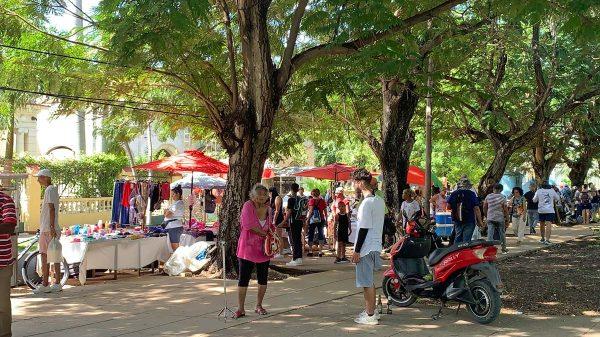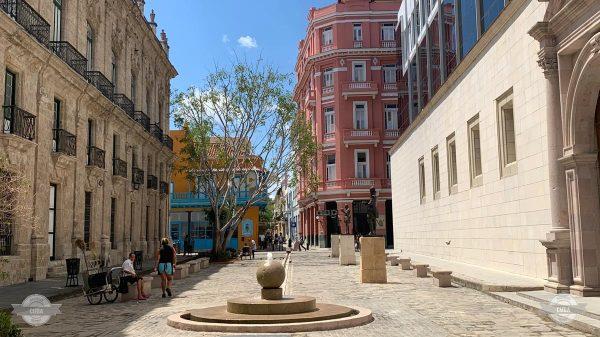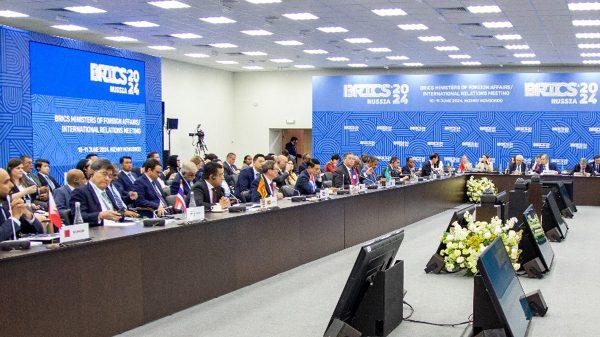Cuban President Miguel Diaz-Canel and Prime Minister Manuel Marrero Cruz recently spoke to the audience on Mesa Redonda to explain the steps needed to alleviate the effects of the pandemic.
The actions to be taken in the near future will be known as the “new normal.” An outline of those new measures is outlined in the following article.
In his opening remarks, Diaz-Canel addressed the following issues:
Covid in Cuba, Results and Future Actions:
- The confrontation with COVID-19 has been successful, demonstrated by the country’s COVID numbers which are released on a daily basis by the Public Health Ministry.
- At the present time, Cuba is facing three issues. Diaz Canel identified the three main issues as the confrontation of the pandemic, the continuation of the blockade and its ongoing financial persecution, and the implementation of the economic and social strategy.
- In the case of Cuba, 100% of the confirmed cases and contacts have been treated in hospitals.
- Cuba’s intensive care system has never collapsed. Additionally, no deaths have occurred, as has happened in other parts of the world because of such a collapse. At this moment, it is critical and serious.
- More than 700 research investigations began and 16 clinical trials are underway for 13 medications. At the same time, Cuba has sent 52 medical brigades to other parts of the world.
- Active cases in Cuba stands at seven percent of the population; globally, it is 21.8% and in the Latin American region, it is more than 31.4%.
- At the time of writing, the recorded cases of COVID-19 infection stands at an accumulated 6,035 persons. Global death rates total 2.9% and that of the Americas is 3.3%. Cuba’s number of deceased is 123.
Planning as an Important Feature in the Functioning of the Country:
Planning, “an element of our system, sometimes very criticized by some,” is the one that can explain the principle of social justice that prevails in the midst of this situation; that “it has been possible to maintain, sometimes without satisfying, the regulated deliveries, the food and hygiene products, in the context of closed borders, of contraction of the market and of absolute economic and financial persecution.”
World Situation in which Cuba Must Develop its Economic and Social Activity:
- The economic situation in Cuba is characterized by less income, a reduction of tourism and the fuel supply because of the effects of US sanctions.
- Declining food production, the supply of goods and services, the loss in trade, and “repressed” inflation as evidenced by the lineups due to pandemic conditions.
Promotion of the Economic Strategy:
- Cuba has had to “introduce a necessary and undesirable partial dollarization in the economy.”
- There is a need to promote greater functioning of all forms of production, to increase industrial production, to stimulate goods and services, both in the state and private sectors.
- The government has promised Cubans will be informed of the implementation of financial, monetary and exchange rate unification in a timely manner. However, monetary and exchange rate unification will not be the magic solution to economic and financial problems in the country.
- The ration (libreta) book will remain to ensure peoples’ ability to purchase basic items. Once the markets have stabilized, it will be discontinued.
Finance, monetary and exchange rate unification:
- As part of this strategy, there is the ordering task that is at a higher stage with clear definitions of what its main components are.
- The population will be informed about the implementation of this measure in a timely manner.
- Monetary and exchange rate management which has an interdisciplinary and transversal character, must necessarily be applied in the midst of the complexity it is experiencing.
- Monetary and exchange rate unification is not the magic solution to economic and financial problems.
- Undue subsidies will be partially eliminated, while salary, pension, and price reforms will be implemented.
- The application of shock therapies to workers is excluded as a policy. Therefore, no one will be left alone here.
- The supply book will remain in force as a mechanism to ensure citizens’ access to the purchase of basic items in conditions of supply deficit. Later it will be abolished to the extent that the country manages to stabilize the markets.
- The decision of the Cuban government to guarantee the bank deposits of the population and businesses, whether national or foreign, as well as all cash that is in CUP, CUC or foreign currency is ratified. No one has to worry about their accounts, no matter which currency.
- The export sector is favored by receiving greater income in CUP for exports. It favors price correction which allows national goods, if produced efficiently, to be less expensive than imported goods.
- It creates incentives to increase efficiency and competitiveness in the business sector.
It also favors efficient import substitution and productive linkages and allows for greater transparency in accounting. - It favors the improvement of the possibilities of linkage between the government and the private sectors. It creates the space to promote an increase in salaries, an increase in pensions and social security benefits, and their purchasing power.
Prime Minister Marrero Cruz also spoke about the “new normality” for Cuba.
He defined the stages that make up the new normality: the Epidemic stage; the Recovery stage; the stage of the “new normality.”
The New Normality:
On March 11, the World Health Organization declared the new coronavirus as a global pandemic. On that same day, the first three cases of COVID-19 were detected in Cuba and new protocols for action were put in force on the Island.
A plan to face the new normality was approved, based on the knowledge of scientists and health personnel.
The new plan to face COVID-19 has three main objectives:
- To move towards a new normality in a gradual and asymmetric way.
- To mitigate the economic and social impact caused by COVID-19 and the intensification of the US blockade.
- To develop the capacity to confront events that occur within the new normality.
The stages that make up the new normality are defined as the Epidemic stage; the Recovery stage; the Stage of New Normality:
- The plan of measures is currently composed of 190 actions.
- The strategy is aimed at ensuring each province has a laboratory of microbiology and molecular biology.
- Established protocols at the borders and airports, ports and marinas created for the arrival of travelers from abroad.
- All persons arriving in the country will be required to submit a health declaration and will be undergo a PCR test in real time.
- Foreigners will go to their hotels and have access to a team of health professionals.
- Cuban citizens who remain abroad and are close to the expiration of their 24-month period outside Cuba may approach the Consulates and request a one-year extension of their stay.
- The emergency services will implement a differentiated treatment for patients with symptoms of COVID-19. A hospital will be set up for adults and another for pediatric patients.
Details on Labor Matters in Cuba:
- The work and salary legislation will be maintained, as well as the promotion of distance work in all the activities that allow it.
- Unpaid leave will be extended for those stranded in other countries by the coronavirus, as well as the temporary suspension of leave for self-employed workers also affected by the virus.
- The approval of aid for vulnerable people continues to be decentralized to municipal work departments.
Changes in National and International Transport:
- Isolation rooms in the terminals are maintained, as well as active searches in all units.
- Public transportation reestablishes both state and private systems.
- In cases of a complex epidemiological situation, transportation service for hospitals and other health centers will be guaranteed.
Measures in Education:
- The completion of the 2019-2020 school year and the preparations for the start of the 2020-2021 school year on November 2 are moving forward.
Phases of COVID and its Regulation:
- As of October 12, Havana is in Phase III, although new details will be announced in the next few days.
- The Havana airport remains closed.
- Sancti Spíritus and Ciego de Ávila are still in a phase of limited native transmission. The rest of the provinces are moving towards the “new normality.”
- Gastronomic and recreational services will be reopened maintaining the epidemiological measures. Bars, night clubs and festive activities will be under stricter protocols.
This is the Cuban government’s strategic approach for returning its society and economy to a “new normal,” in contrast to the haphazard approach of other countries, which is demonstrably less effective.

David Urra is the chief marketing analyst at International Consulting & Representation Services/Cuba (IcarusCuba). He has produced market studies for a wide range of Latin American, European and U.S. clients exploring market entry possibilities in Cuba’s IT, tourism, ranching, pharmaceutical and manufacturing sectors.














